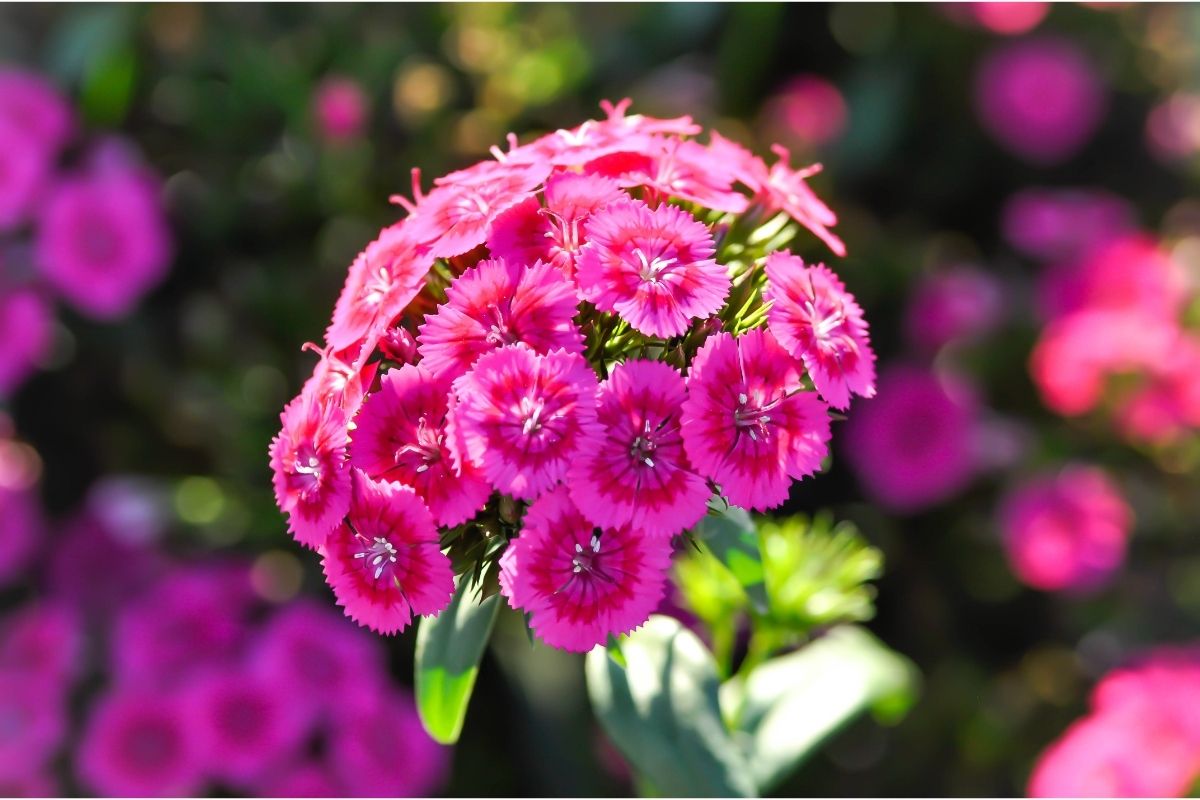Lavender is a must-have in most home gardens. It’s known for its intensely relaxing scent, wonderful foliage, and incredible flowers.

While this plant can survive happily and well alone, adding plant combinations can not only increase the potential of your garden, but it can apply protective measures to your lavender.
In this article, we’re going to discuss what you should plant with lavender, to keep this plant happy, healthy, and well.
What Is Lavender?
For those who are not familiar with lavender, lavender is a flowering plant. It is a part of the mint family and is easy to spot, due to its unbelievable flowers. The color of lavender can be varied but is generally lavender, deep purple, light pink, blue, and white.
Lavender has been used throughout the ages for its medicinal properties. Harvest is often harvested and turned into essential oils.
The lavender scent is known to help sleep issues, and even more serious conditions such as insomnia. Lavender can also be extracted to be used in baking and can be even used to decorate the house.
Luckily, this wonderful plant is very easy to grow, if the conditions are right. It can be grown in both plant beds, and plant pods.
Lavender needs to have full sun, but some varieties of lavender can work with potential shade. The soil also needs to be well-drained, to avoid any illness to the plant.
What Is Companion Planting All About?
Companion planting is another way of saying planting one plant, next to, or near to, another plant. This is not randomly selected and is carefully curated to ensure that the properties of each plant balance and support each other.
It is a true gardening method that protects plants and crops alike. It can be used to deter any pests, such as unwanted worms, or insects that will destroy the plant. Likewise, certain plants can release chemicals that will promote plant growth, which will encourage other plants to grow.
There is also the fact that companion planting can improve soil nutrients, which means less overall work for the gardener. Moreover, companion planting can even help attract beneficial insects.
This could be from bringing more bees or ladybugs into the garden, which is essential for most plants and flowers.
Plant Companion And Lavender
So, when it comes to lavender, there is a range of plants that either complement lavender very well, or can provide benefits for the lavender plant.
We will discuss these types of plants below.
Echinacea
The first plant combination is Echinacea.
Echinacea and lavender are very popular pairings. Both plants grow in similar conditions, which means it is very easy to take care of both plants, as they require a similar routine. In fact, echinacea needs just as much sun as lavender, but less water, so it is a very economical option.
Echinacea is a fantastic pairing if you are suffering a drought, or there are foreseeable rainfall worries, due to the fact it requires less water to survive. However, be warned that echinacea also requires soil that drains well, and is crucial to the health of both plants.
Aesthetically, these plants go together very well. When they are both in bloom, they produce a stunning array of purple blossoms.
You should also note that echinacea can attract beneficial insects such as butterflies and bees, which is another reason lavender and echinacea are commonly paired together.
Oregano

The next companion plant is oregano.
Oregano is a herb and is excellent for pairings with lavender. It is very easy to care for oregano. Like lavender, it requires a lot of suns to thrive, but this plant can tolerate a little more shade than lavender. Oregano requires dry soil, which makes it ideal for sunnier climates.
If you find that your garden is not attracting enough bees, you should consider opting for oregano for your companion pairing. Oregano is known for attracting bees, and as a result, is another very popular companion pair.
What’s more, if you enjoy cooking, you will be able to harvest your brown oregano. This is another reason the pairing is so popular because it allows for cooking fanatics to get a substantial harvest from their garden, even in very small gardens.
Roses
The third companion plant is roses.
Roses are more of an aesthetic companion plant. Lavender and roses pair very nicely together and can make a garden look incredibly beautiful. When both flowers are in full bloom, it can make a garden look mesmerizing.
The only issue with choosing lavender is that they require more water than lavender. Roses must be watered at least two times a week for them to thrive. This means in warmer climates, this may not be the most ideal pairing.
There should also be a substantial space between the two plants, to ensure that both the lavender and the roses are not overcrowded, as they will not benefit from too close of a pairing.
Alliums
The next companion pairing is alliums.
Alliums can be very beneficial paired next to lavender, but they should be planted with great precision. If you are a landscape gardener, you will have little problem working with alliums.
However, if you are a novice, you should be aware that alliums grow to quite a tall height, in comparison to the lavender. This means you should pair them accordingly, to ensure that the lavender is not overcrowded,
When paired correctly, the companion plants look incredible together and can make a showstopping garden display, especially when both plants are in bloom.
The beneficial aspect of alliums, other than their aesthetic value, is the fact that they can help prevent unwanted insects to creep into the garden. This is because they have a very strong scent, which will repel most unwanted insects.
Furthermore, this wonderful plant is perfect if you live in a drought-prone climate. It does not need much water, like the lavender, which makes life much easier for the gardener, and in fact, can be cost-efficient. Moreover, alliums require full sun, just as lavenders do.
Summary
So, if you’re looking for a companion plant for lavender, try echinacea, oregano, roses, or alliums. Depending on your climate, and requirements, either one of these remarkable plants will be a great companion for lavender. Good luck!
- Best Hanging Plant For Low Light - September 4, 2023
- Best Indoor Plants Florida - August 28, 2023
- Best Plants For Bathroom Smells - August 21, 2023








